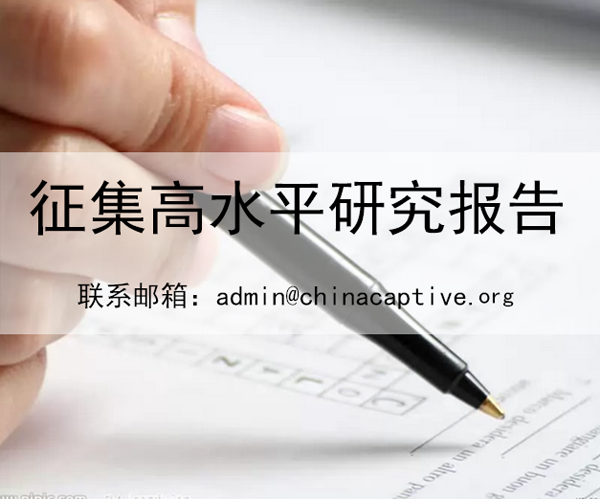As is the case with Indonesia’s banking sector, insurance in Indonesia is on the cusp of wide-reaching change. Given the country’s large population of nearly 250 million – expanding by more than 1% per annum – its growing middle class and a GDP rising at approximately 5% a year, the insurance sector stands to benefit from these fundamentals in the years ahead. Insurance density in Indonesia is less than 3% of the density of Singapore. This is due to the lack of interest in insurance by Indonesians which meant that at the end of September 2015, only 2.51% of the population held an insurance policy. While growing steadily, albeit from a low base, Indonesia’s insurance sector for both general and life insurance faces an uphill battle to increase penetration at a time when the slowing economic situation has further relegated insurance spending in terms of Indonesians' priorities.
As insurers garner more business, there will be challenges for the OJK, as it works to achieve the right balance of regulation to ensure long-term sustainability without limiting growth or worrying investors
On the general (non-life) insurance side of the business, which is smaller than life, premium volume increased by 17.7% in 2014. Life insurance premium income was up 2% year-on-year (y-o-y) as of the third quarter of 2014 – the most recent data available – although the Indonesia Life Insurance Association (AAJI) was aiming for growth of between 23% and 29% in 2015. Growth in the insurance sector in Indonesia is expected to stabilise in 2016 as economic growth is likely to recover, according to Fitch Ratings. The international rating agency estimates that Indonesian real GDP growth will improve to 5.3% in 2016 and 5.5% in 2017 from 4.8% in 2015.
The forecast growth would follow the recent wave of reforms introduced by the government to improve business sentiment and strengthen the country's financial fundamentals .
Outlook is stable
In a report entitled ‘2016 Outlook: Indonesia’s Insurance Sector’, Fitch stated that the rating outlook for Indonesia's life and non-life insurance sectors in 2016 is 'Stable', underpinned by steady demand, manageable investment risks among insurers, and adequate buffers against catastrophe losses through reinsurance coverage. The sector as a whole has a 'Stable' outlook, reflecting Fitch's view that low insurance penetration and growing awareness will continue to support life insurance growth. A generally conservative investment allocation is likely to mitigate the volatility in insurers' operating results.
Meanwhile, the non-life insurance sector is supported by rising affluence and disposable incomes among the population, economic recovery and protection from reinsurance coverage. Fitch believes that several initiatives taken by the regulator (the Financial Services Authority, OJK) to optimise local reinsurers' capacity could widen the sector's operating scale and raise the level of competitiveness among domestic players.
Nonetheless, managing risk accumulation and enhancing risk management are key to ensure the maintenance of a healthy underwriting margin among reinsurers. The industry also faces changing regulatory requirements and an increase in competition. The regulator has indicated plans to implement an enhanced version of the current capitalisation framework, while the implementation of the ASEAN Economic Community (AEC) will encourage greater market liberalisation among insurers operating in ASEAN.
General insurance to rebound
The Indonesian General Insurance Association (AAUI) has expressed optimism that gross premiums of general insurance will grow by almost triple in 2016 from last year. This projection would equate to general insurance gross premiums hitting 58.9 trillion IDR ($4.4 billion USD) by the end of 2016, on the back of government infrastructure developments. The growth is expected to reach 15% to 20% this year, or about triple the 6.7% expansion posted in 2015.
In 2015, Indonesia’s general insurance industry was hit by slowing sales of cars , homes and apartments , the association said. Demand for general insurance in 2016 is forecast to increase as the Indonesian government has been pushing infrastructure projects, according to AAUI .
Our outlook remains positive as Indonesia’s large population and low rate of general insurance penetration leaves ample room for growth. The new Jokowi government administration's plan to focus on infrastructure spending also opens up a lot of opportunities for the general insurance sector.
A further growth driver for the general insurance industry this year is the increase in People’s Business Loans, a government programme that provides loans to small and medium sized businesses in Indonesia. The programme is expected to extend up to 120 trillion IDR of loans to businesses this year.
Foreign ownership limits in question
However, the ability of international insurance and reinsurance companies to further expand their activities in the potentially massive Indonesian insurance market has been surrounded by uncertainty as the OJK has made noises regarding reducing the foreign ownership threshold for insurance companies in Indonesia.
The Indonesian authorities originally passed a law in 2008 that allowed foreign companies to own up to 80% of Indonesian insurance companies (80% at establishment and this could be increased by further share issuances). At the end of 2014, there were five general insurance and 11 life insurance companies with foreign ownership of 80% or above.
The OJK has now confirmed as of May 2016 that the cap on foreign ownership for insurance companies will be maintained at 80%. For those companies with foreign shareholdings above that ceiling, they will be expected to divest their shares to a local shareholder or to carry out corporate actions such as through an initial public offering (IPO).
In the domestic life insurance business, the ten largest firms based on their total premiums are dominated by joint ventures backed by multinational firms, such as the UK’s Prudential plc, Canada’s Manulife Financial and Germany’s Allianz. State-owned Jiwasraya is the only local company competing in the top tier.
In addition to that, the OJK would also invite insurance firms to discuss a new stipulation regarding a ‘single presence policy’ in the 2014 law that would require two sister insurance firms owned by a single holding company to be merged into one. This would mirror the execution of this same regulation in the banking sector.
Risks remain
Despite the positive fundamentals supporting growth in Indonesia’s insurance industry, Fitch has also warned that the sector is in danger of facing severe exogenous shocks as well as natural disasters. While risk from natural disasters can be reinsured, and limits can be placed on policies to protect insurers from excessive claims, Indonesia will continue to require extensive coverage.
Moreover, the sector faces structural issues common to fast-growing, developing markets. Given the sophistication of insurance products, training employees can be very expensive, and staffing remains an urgent challenge, with turnover for salespeople at around 40%, according to DBS Bank. The lack of skilled workers also serves to drive up wage inflation in the sector.
Given Indonesia’s expanding middle class and continued GDP growth, insurance penetration is likely to grow in line with sustained economic growth. However, even as insurers garner more business, there will be challenges for the OJK, as it works to achieve the right balance of regulation to ensure long-term sustainability without limiting growth or worrying investors. The government is expected to approach the issue of reciprocity delicately, watching to ensure that Indonesia will encounter a level regional playing field while also allowing foreign insurers to actively participate in the local market.
Source:Global Business Guide Indonesia - 2016
0
YuanName:
Mobile Number:
Comments…
After your successful submission, our staff will soon be in touch.





